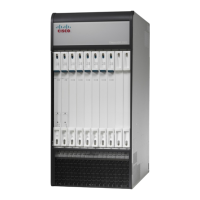Creating and Binding the SRP Context
ICSR is configured on two VPC-DI instances. Be sure to create the redundancy context on both systems.
CLI commands must be executed on both systems. Log onto both active CFs before continuing. Always
make configuration changes on the active CF in the primary VPC-DI instance first. Before starting this
configuration, identify which VPC-DI to configure as the primary and use that login session.
Important
configure
context srp_ctxt_name [-noconfirm]
service-redundancy-protocol
bind address ip_address
end
Notes:
•
ICSR should be configured and maintained in a separate context.
Configuring SRP Context Parameters
Important
Basic Parameters
This configuration assigns a chassis mode and priority, and also configures the redundancy link between the
primary and backup chassis:
configure
context srp_ctxt_name
service-redundancy-protocol
chassis-mode { primary | backup }
priority priority
peer-ip-address ip_address
hello-interval dur_sec
dead-interval dead_dur_sec
end
Notes:
•
ICSR should be configured and maintained in a separate context.
•
When assigning the chassis mode on the backup chassis be sure to enter the backup keyword.
•
The checkpoint command sets the amount of time the chassis waits before check pointing an existing
call session. Checkpoints can be set for IMS (VoLTE) and/or non-IMS sessions. The checkpoint is a
snapshot of the current application state that can be used to restart its execution in case of failure. The
default setting is 60 seconds.
•
The priority determines which chassis becomes active in the event that both chassis are misconfigured
with the same chassis mode; see Chassis Initialization, on page 271. The higher priority chassis has the
lower number. Be sure to assign different priorities to each chassis.
ASR 5500 System Administration Guide, StarOS Release 21.5
273
Interchassis Session Recovery
Configuring the Service Redundancy Protocol (SRP) Context

